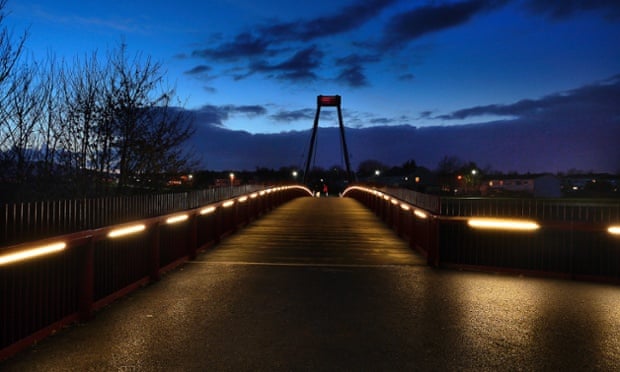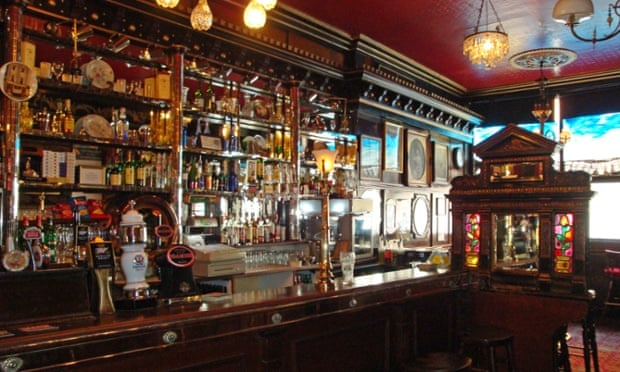This post may contain affiliate links. We may earn money or products from the highlighted keywords or companies or banners mentioned in this post.
When I think of Dublin my focus is on its suburbs and its edges, because that’s where I come from. I grew up in the south-west of the city in a suburb called Tallaght, which was built in the 1970s. But when I consider the city of Dublin, I see the compact, Georgian centre with its monumental buildings such as the old Irish parliament on College Green, opposite Trinity College.
You get to know what’s real about a city when you leave the centre of it. Dublin is keen on portraying itself in a certain way, as a tourist-friendly city, and part of that means putting across ideas of places you must visit, like the Guinness factory and Trinity College – to see the Book of Kells. These places are always busy and because of the time people spend going to them they don’t really get to see anywhere else.

Photograph: failteireland.ie
If you decide against the Guinness Storehouse tour, and the free drink, you should still go and explore the area around St James’s Gate, known as The Liberties. It’s a part of Dublin that was built around small rivers and is just outside the city walls. It used to have many breweries, though Guinness was the one that stuck, while the others fell by the wayside.
It’s a mistake if you visit only having a checklist of “top 10 things you need to do”. I have been to Paris but I haven’t seen The Louvre, yet I know Paris well. Dublin has huge amounts to offer in slightly alternative places, one of which you’ll find if you go along O’Connell Street, past the Spire of Dublin, and head on to Cavendish Row and The Gate Theatre. This is where Orson Welles made his stage debut at the age of 16, after travelling to Ireland and attempting to pass himself off as a famous theatre actor.
An interesting spot – because it confirms you only have to go a little further to find something different – is just past Parnell Square and on to Blessington Street. At the end of this is a gate that lets you in to Blessington Street basin, which was once part of Dublin’s water supply. Now it’s a small public park – and a great, quiet spot.
It’s important that culture doesn’t end up being just about heritage. When I was writing Hidden City, I wanted to use Joyce and Beckett as figures to explore biographically, to see where they lived, to make a living investigation of their work rather than trying to make them saints. And I do also think there is a new wave of Irish writing, from the likes of Colin Barrett, Rob Doyle, Mary Costello and Mark O’Connell.
Contemporary Dublin runs on artisan coffee and burritos. There are numerous coffee spots in the area south of Dame Street and west of Grafton Street – which was a rag trade area in the past. As for burritos, well they’ve become a bit of a craze over the last couple of years. Pablo Picante, on Clarendon Market, is a good one.

Photograph: Alamy
I think of street food when I think of cities and in Dublin if I was running around that is what I’d mostly eat. Leo Burdock’s fish and chip shop – the Christ Church branch for me – is a historic place and, while it is touristy (it has a list of famous people who have visited), it’s used by locals as well.
You get a real idea of the geography of the city from Killakee. It’s just 5km up Stocking Lane and is my favourite view of Dublin. You’re on the side of a hill, pretty high up, and you can see the M50 motorway and the fields below, as well as Dublin bay and the city centre.
The Long Hall on South Great George’s Street is a fine pub. Bruce Springsteen is said to pop in whenever he’s in town. It also appears in the video for Phil Lynott’s song Old Town.

Photograph: Timothy J Barron/failteireland.ie
I’ve heard people say: “I have been to Dublin, there are no Irish people there.” But they’ve often only been in shops and pubs in the city centre. People underestimate Dublin’s diversity.
The mutation of Dublin under the Celtic Tiger means that the city – while by no means unrecognisable from how James Joyce would have seen it – has expanded and the suburbs have grown. There are parts of Dublin that are very near the border with the next county.
As for misconceptions or preconceptions … I guess it would be the friendliness. It’s not an unfriendly city but it’s no friendlier than other similarly sized cities. People’s idea of it is probably informed by it being seen as a good place for a weekend break – and the craic.

If you’re looking for a drink, there’s the Dice Bar on Queen Street, in Smithfield on the Northside of Dublin. It’s just outside the city centre, not too far, only a short walk. It has a New York dive bar feel and serves local beers from smaller breweries. It’s a nice place to while away an evening.
• Hidden City: Adventures and Explorations in Dublin is out now (£16.99, Penguin). To order a copy for £13.59 including UK p&p call 0330 333 6846 or visit bookshop.theguardian.com
Powered by WPeMatico











